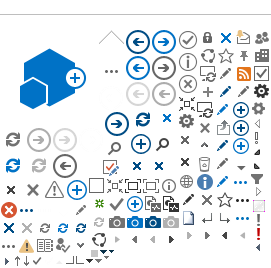Doha, 31 May 2022: Hamad Medical Corporation’s Neurology Department and Patient Family Education Unit in collaboration with Outpatient Neurology Clinic recently organized a three-day campaign to highlight, share stories and raise awareness and campaign with everyone affected by multiple sclerosis (MS) - one of the most common diseases of the central nervous system (brain and spinal cord).
The 2020-2023 World MS Day theme is: ‘Connections’. World MS Day is officially marked on the last Wednesday of May, however, events and campaigns take place throughout the month. Over the three-day event at HMC, booths were set up at Doha Festival City and Hamad General Hospital’s main entrance to offer information about MS as well as distribute educational materials and leaflets to staff and hospital visitors. There were also opportunities for visitors to make enquiries about the disease from the campaign team.
“This year’s theme on MS Connections is all about building community connection, self-connection and connections to quality care, said Prof. Dr. Dirk Deleu, Senior Consultant and Director of MS Program, HGH, adding that “the day brings the global MS community together to share stories, raise awareness and campaign with and for everyone affected by multiple sclerosis.”
“Our aim for the MS Day campaign was to educate HMC staff as well as the public about MS, its signs and symptoms, the importance of supporting people affected by it and the need to ensure the effectiveness of early detection and treatment of the disease in order to prevent recurrent attacks,” states Prof Dr. Deleu.
Speaking about MS, he explained that the disease is an inflammatory condition caused by damage to myelin – a fatty material that insulates nerves. “In MS, the loss of myelin affects the way nerves conduct electrical impulses to and from the brain. The immune system attacks the protective sheath (myelin) that covers nerve fibers and causes communication problems between the brain and the rest of the body. Eventually, the disease can cause the nerves themselves to deteriorate or become permanently damaged. Symptoms of MS can include blurred vision, weak limbs, tingling sensations, unsteadiness, memory problems, and fatigue,” Prof. Dr. Deleu highlighted.
He noted that more than 2.8 million people in the world, mostly females aged from 17 to 27 years, are suffering from MS. The prevalence rate of MS in the Gulf area is around 94 cases per 100,000 people. In Qatar, there are more than 1,200 patients, mostly young females, suffering from MS,” he noted.
Prof. Dr. Deleu said the cause of multiple sclerosis is unknown and it is considered an autoimmune disease in which the body's immune system attacks its own tissues. “Most people with MS are diagnosed between the ages of 20 and 40 and it is two to three times more common in women than in men. There is no drug that can cure MS, but treatments are available which can modify the course of the disease,” he explained.
According to him, the signs and symptoms of MS vary widely and depend on the amount of nerve damage and which nerves are affected. “Some people with severe MS may lose the ability to walk independently or at all, while others may experience long periods of remission without any new symptoms. However, MS is a disease that affects people’s lives just like diabetes if diagnosed early and the patient adhere to the treatment. There are different types of treatments for MS, but each is tailored according to patient’s profile to enhance adherence to the treatment and also to reduce the risks of developing side effects. Once treatment has been started, it is important to strictly adhere to treatment to avoid increase in the disease’s activities and relapses. When properly managed, MS is not going to change essentially your life as you will be able to raise a family, have children, have professional career and be physically active. At HMC, we have a multi-disciplinary team which takes care of MS patients, which consists of doctors, patient educators, clinical therapists, occupational therapists, and physical therapists.
